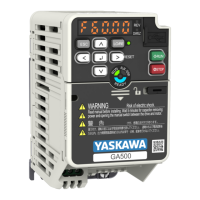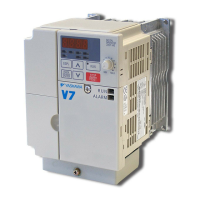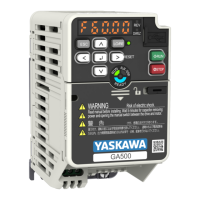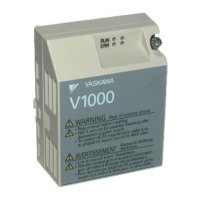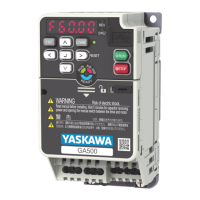Electrical Installation
3
3.1 Section Safety
YASKAWA SIEPYAIH6B01A HV600 AC Drive Bypass Technical Reference 71
WARNING
Tighten screws at an angle in the specified range shown in this manual.
If you tighten the screws at an angle not in the specified range, you can have loose connections that can cause
damage to the terminal block or start a fire and cause serious injury or death.
Damage to Equipment
Do not apply incorrect voltage to the main circuit of the bypass. Operate the bypass in the specified
range of the input voltage on the nameplate.
Voltages that are higher than the permitted nameplate tolerance can cause damage to the bypass.
NOTICE
Do not let unwanted objects, for example metal shavings or wire clippings, fall into the bypass
during installation. Put a temporary cover over the bypass during installation. Remove the
temporary cover before start-up.
Unwanted objects inside of the bypass can cause damage to the bypass.
Damage to Equipment
When you touch the bypass, drive, and circuit boards, make sure that you observe correct
electrostatic discharge (ESD) procedures.
If you do not follow procedures, it can cause ESD damage to the drive and bypass circuitry.
Select a motor that is compatible with the load torque and speed range. When 100% continuous
torque is necessary at low speed, use an inverter-duty motor or vector-duty motor. When you use a
standard fan-cooled motor, decrease the motor torque in the low-speed range.
If you operate a standard fan-cooled motor at low speed and high torque, it will decrease the cooling effects and can
cause heat damage.
Obey the speed range specification of the motor as specified by the manufacturer. When you must
operate the motor outside of its specifications, contact the motor manufacturer.
If you continuously operate oil-lubricated motors outside of the manufacturer specifications, it can cause damage to
the motor bearings.
When the input voltage is 440 V or higher or the wiring distance is longer than 100 m (328 ft), make
sure that the motor insulation voltage is sufficient or use an inverter-duty motor or vector-duty
motor with reinforced insulation.
Motor winding and insulation failure can occur.
Make sure that all connections are correct after you install the bypass and connect peripheral
devices.
Incorrect connections can cause damage to the bypass.
Note:
• Torque characteristics are different than when you operate the motor directly from line power. Make sure that you understand the load
torque characteristics for the application.
• The current rating of submersible motors is usually higher than the current rating of standard motors for a given motor power. Make sure
that the rated output current of the bypass is equal to or more than the current rating of the motor. If the motor wire length is longer than 100
m (328 ft), select the correct wire gauge to adjust for a loss in voltage and prevent a loss of motor torque.
• Do not use unshielded wire for control wiring. Use shielded, twisted-pair wires and ground the shield to the ground terminal of the bypass.
Unshielded wire can cause electrical interference and unsatisfactory system performance.
